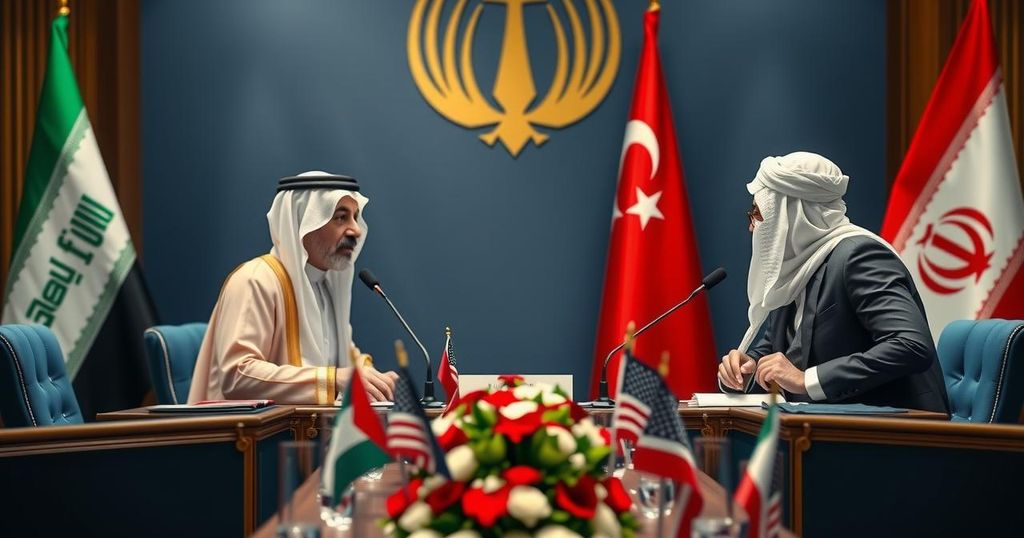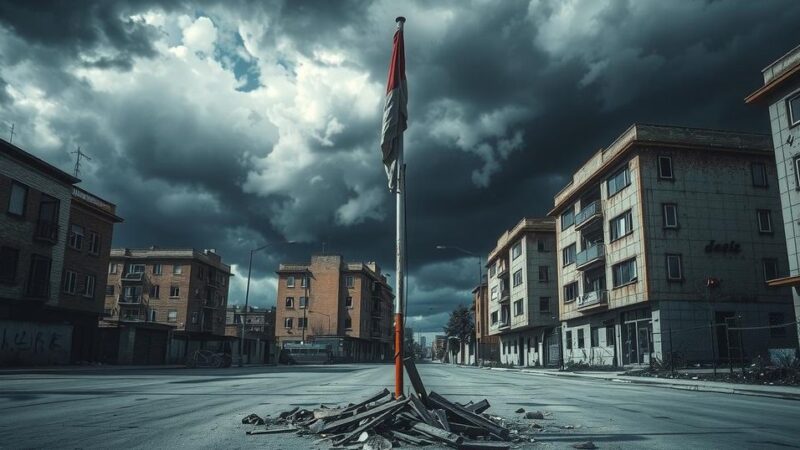At the BRICS Summit in Kazan, Sheikh Mohammed bin Zayed Al-Nahyan of the UAE met Iran’s President Masoud Pezeshkian for the first time amidst rising tensions regarding three disputed islands in the Persian Gulf. The meeting focused on regional developments, including conflicts in Gaza and Lebanon. Both leaders emphasized the need to address ongoing issues while navigating the complex backdrop of Iran’s territorial claims and the UAE’s normalization with Israel.
During the recent BRICS Summit in Kazan, Russia, the leaders of the United Arab Emirates (UAE) and Iran convened for their first meeting in a context marked by rising tensions surrounding three disputed islands in the Persian Gulf. Sheikh Mohammed bin Zayed Al-Nahyan (MbZ) of the UAE met with Iran’s newly elected President Masoud Pezeshkian to discuss critical regional developments, including the ongoing conflict in Gaza and Lebanon. The dialogue, according to Iranian official statements, also covered the status of the islands—Abu Musa and Greater and Lesser Tunbs—seized by Iran in 1971 amid British withdrawals from the UAE. Recent provocations, particularly statements from the European Union and the Gulf Cooperation Council urging Iran to conclude what they termed an occupation, have inflamed the situation further. In response to these remarks, Iranian officials reiterated their claim of sovereignty over the islands. Additionally, the political dynamics are complicated by the UAE’s normalization agreement with Israel, known as the Abraham Accords, and Iran’s history of supporting groups opposing Israeli actions. The summit underscored the necessity for further dialogue and highlighted a shared concern between the two nations to halt Israeli military actions in Gaza and Lebanon. Despite the official UAE news agency confirming MbZ’s presence at the summit, there was no mention of the critical meeting with President Pezeshkian. This engagement could signify a potential thaw in relations, albeit against a backdrop of historical disputes and ongoing geopolitical tensions.
The BRICS Summit serves as a significant platform for dialogue among emerging economies and provides a counterbalance to Western political influence. The meeting between the UAE and Iranian leaders, occurring in the midst of renewed geopolitical tensions pertaining to the disputes over the three occupied islands in the Persian Gulf, reflects the complexity of Middle Eastern politics. The islands in question have been a flashpoint in Iran-UAE relations for decades, exacerbated by Iran’s territorial claims and the UAE’s ongoing calls for sovereignty. Moreover, the broader context of the Israeli-Palestinian conflict further complicates the regional dynamics, with multiple actors involved making dialogue imperative.
The recent encounter between leaders of Iran and the UAE at the BRICS Summit represents a cautiously optimistic step towards easing long-standing tensions. While the meeting acknowledged shared concerns about regional stability, particularly regarding the complex issues surrounding the islands and the ongoing conflict in Gaza and Lebanon, deep-rooted disagreements remain. Both nations appear committed to dialogue, indicating a possible shift towards improved relations amid a historically contentious backdrop. Continuous diplomatic engagement will be critical in determining the future trajectory of Iran-UAE relations and broader regional stability.
Original Source: www.newarab.com






